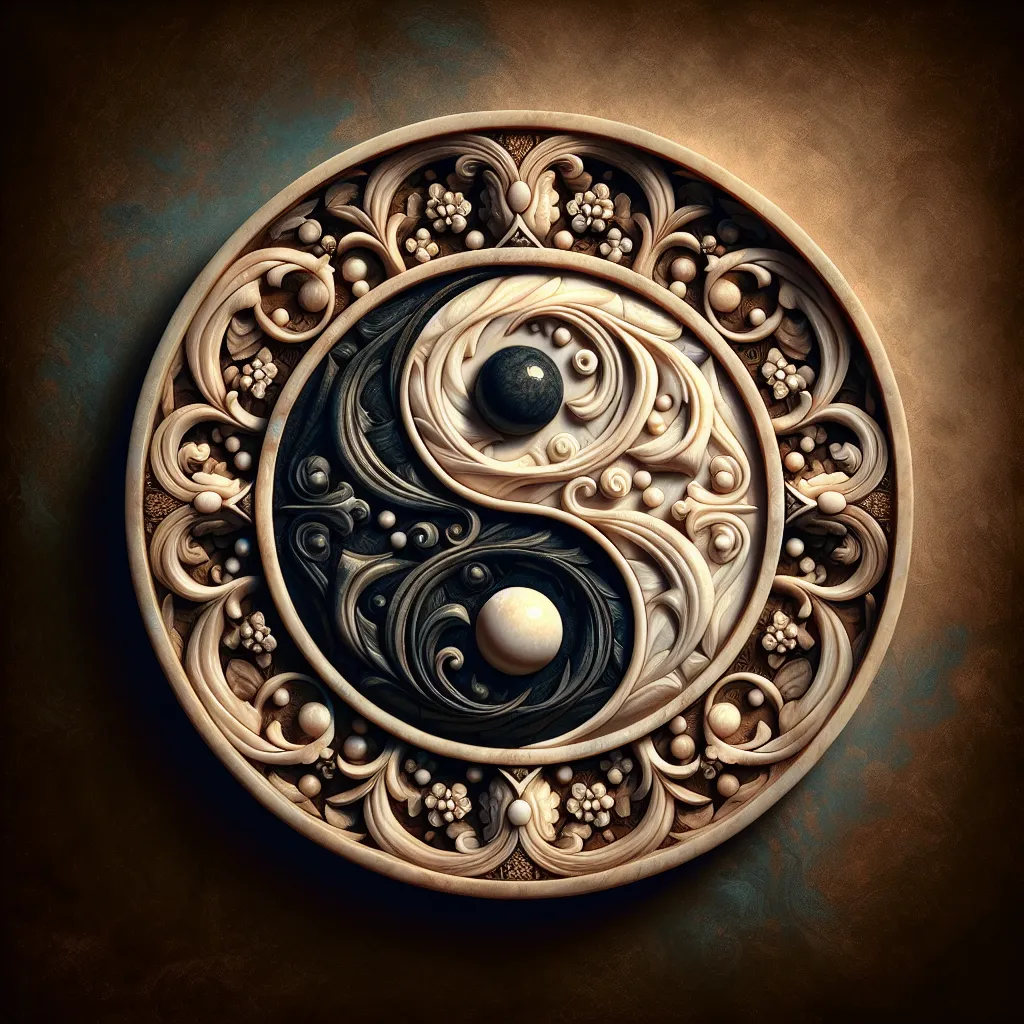
- Published on
- Authors

- Name
- You
The Yin-Yang Symbol: Balancing Opposing Forces
Introduction
The Yin-Yang symbol, also known as the Taijitu, is a fundamental concept in Taoist philosophy. It represents the duality and interconnectedness of opposites in the universe. But beyond its mystical connotations, Yin-Yang also aligns intriguingly with modern scientific principles, particularly in the fields of physics and biology. In this article, we explore Yin-Yang's deep symbolism, its philosophical roots, and the remarkable parallels with scientific understanding.
The Symbol and Its Components
At first glance, the Yin-Yang symbol is a simple, black-and-white circle, divided by a smooth, S-shaped line with a dot of the opposite color in each half. This simplicity, however, belies profound meaning.
| Element | Representation | Description |
|---|---|---|
| Yin | Dark, Feminine, Passive | Represented by the black area with a white dot, Yin is associated with qualities such as darkness, cold, passivity, and femininity. |
| Yang | Light, Masculine, Active | Represented by the white area with a black dot, Yang embodies the qualities of light, warmth, activity, and masculinity. |
| The Dots | Interdependence | The dots illustrate that within each force, there exists a seed of the other, highlighting the interdependence of Yin and Yang. |
| The Line | Transition and Balance | The curved line signifies the dynamic and ever-changing nature of balance within the universe. |
Taoist Philosophy and Yin-Yang
Yin and Yang are central to Taoist philosophy, which focuses on living in harmony with the Tao (the Way). According to Taoism, all aspects of the universe are interdependent and constantly influenced by the opposing forces of Yin and Yang.
The Five Principles of Yin-Yang
- Opposites Interact and Complement: Opposing forces are interconnected, and their interaction creates harmony.
- Dynamic Equilibrium: Balance is not static but a continuous state of flux and adjustment.
- Interdependence: One force cannot exist without the other, and their existence is defined through contrast.
- Transformation: Yin and Yang constantly transform into each other, reflecting the cyclical nature of the universe.
- Wholeness: Together, Yin and Yang complete the whole, illustrating the unity of all existence.
Science Meets Mysticism: Parallels with Modern Science
The concept of Yin-Yang finds remarkable parallels in various scientific principles:
Physics: Wave-Particle Duality
In quantum mechanics, wave-particle duality asserts that elementary particles exhibit both wave and particle properties. This duality echoes Yin-Yang's notion of complementary opposites that define the nature of reality.
Biology: Homeostasis
In biology, homeostasis is the process by which a system maintains internal stability amidst external changes, akin to the dynamic equilibrium of Yin-Yang. The balance between sympathetic and parasympathetic nervous systems also reflects this dualistic interplay.
Cosmology: Dark Matter and Dark Energy
In cosmology, dark matter and dark energy constitute the majority of the universe’s mass-energy content. Their opposing effects on the universe's expansion and structure mirror the balancing act of Yin and Yang in maintaining cosmic harmony.
Conclusion
The Yin-Yang symbol is more than an ancient cultural artifact; it embodies a profound understanding of the universe's dualistic and dynamic nature. Its relevance transcends philosophical and mystical wisdom, resonating with advanced scientific insights. By embracing the balance of opposing forces, we can cultivate a deeper appreciation for the interconnectedness of all things.
Understanding Yin-Yang invites us to explore a holistic view of existence, where science and mysticism converge, enriching our perception of the cosmos and our place within it.
By weaving together mystical wisdom and scientific insight, we not only honor ancient traditions but also enhance our contemporary understanding, fostering a universal appreciation for the balance of opposing forces that shape our world.
